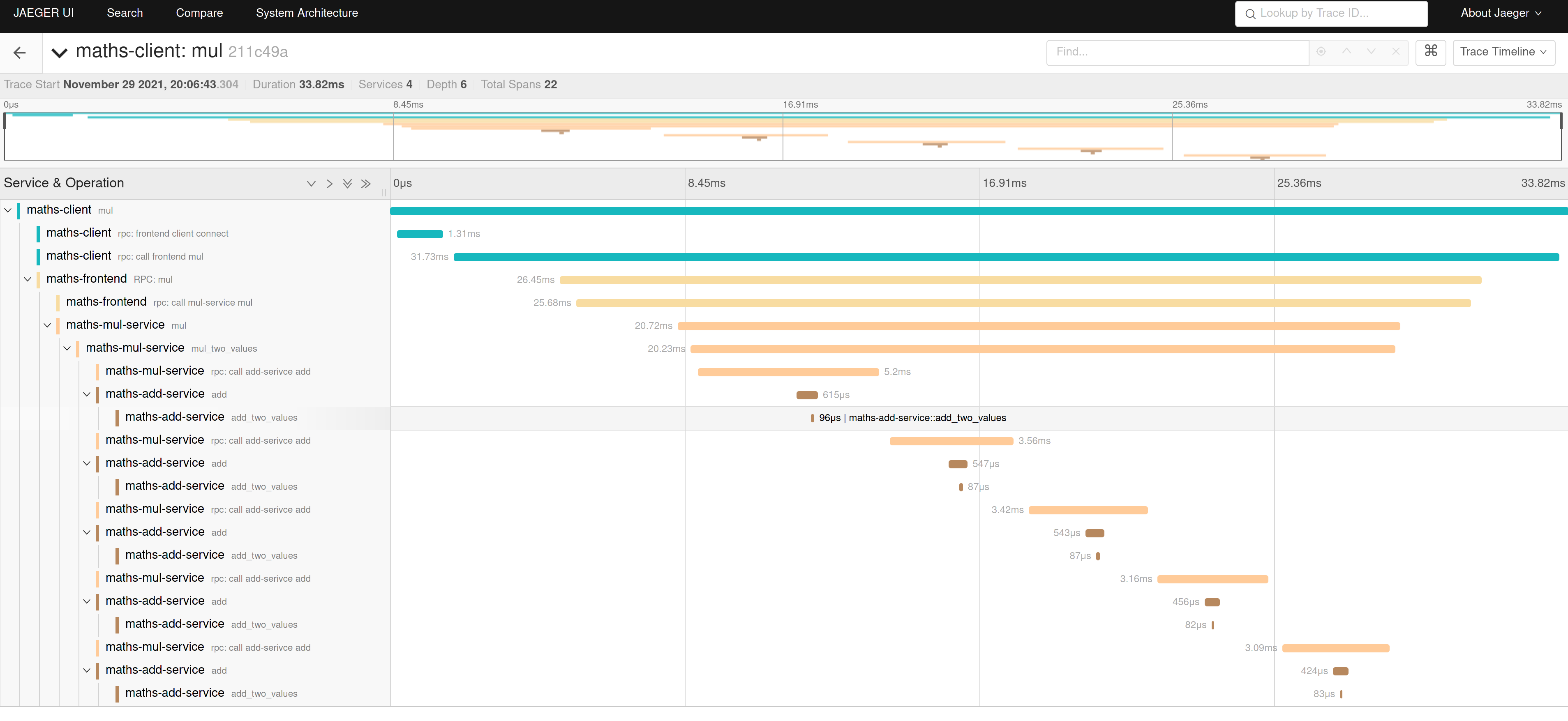This is an example project that shows how to enable multi-service tracing using rust-tracing opentelemetry and jaeger when using tonic for communication over gRPC.
When running, we will be able to visualise request traces in Jaeger like the image below.
The example used here is completely contrived, and used purely to demonstrate tracing through multiple services - yes I know we don't need three services and a fat client to add two numbers :).
This project is structured as a Cargo workspace, comprising of three services, one common crate, and one client for making the calls to the service.
maths-common- This contains the proto definitions for all services, as well as some common functions.maths-frontend-service- This acts as a frontend to our services that do that actual work, and is the entrypoint for the client. This will proxy the requests to the right backend.maths-add-service- This is the backend service that does the addition work, and is invoked from the frontend service, or the mul service.maths-mul-service- This is the backend service that does the multiplication work, this is done by invoking the add service multiple times, and will be called from the frontend service.maths-client- A simple command line client to invoke the RPCs.
We use just to start and stop things and the available commands can be found in the justfile.
start- Build and start all of the maths-* services.stop- Kill all of the maths services.start-jaeger- Starts thejaegertracing/all-in-onedocker container.stop-jaeger- Stops the Jaeger container.
Jaeger can be accessed on http://localhost:16686/ and once you have started the services with $ just start you can then invoke the client with as such:
$ cargo run --bin maths-client -- add 5 7
Finished dev [unoptimized + debuginfo] target(s) in 0.23s
Running `target/debug/maths-client add 5 7`
5 + 7 = 12Getting things going has been based off of the opentelemetry-rust example. We follow the same pattern, but having extracted some of the common code to the maths-common crate.
Most of the magic is in the maths-common/src/lib.rs file - see the following functions:
otel_jaeger_init(service_name: &str)- This will setup otel and jaeger for your service - Note: The services use a batch pipeline processor, set here. The client uses a simple one.trace_req<T>(req: T) -> Request<T>- This will take your proto payload, and create thetonic::Requestfor you, ensuring that the curent span is injected into the request. This is how requests in this example are created.fn set_trace_ctx<T>(req: &Request<T>)- This will extract the trace context out of atonic::Requestand set it as the current spans parent. This is called in all of the tonic async RPC handlers.
Only instrumented spans will show up in the trace, this can be done manually with the tracing::info_span! macros (and the other helpers) - or by adding the #[tracing::instrument] attributes to your functions.
TODO: There is also commented out code for a tonic interceptor that does not work... I suspect it is due to when the interceptor runs, and it not being in a span.
Please feel free to send PRs with any improvements.
This is licensed under the Apache 2.0 license.
